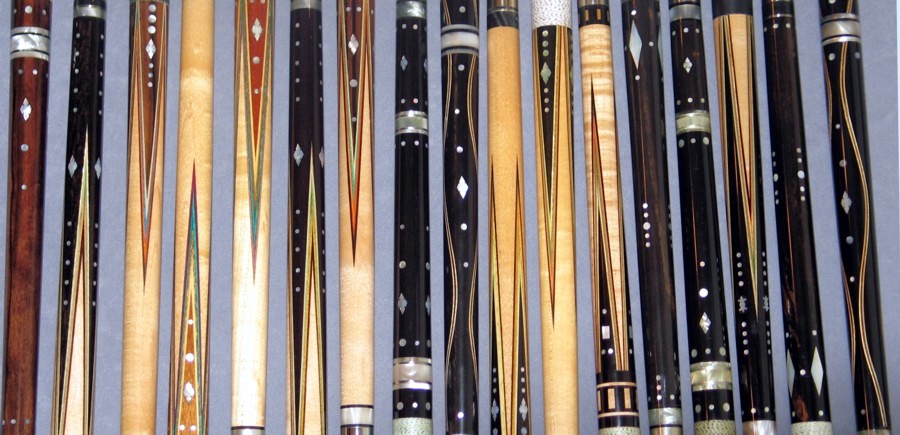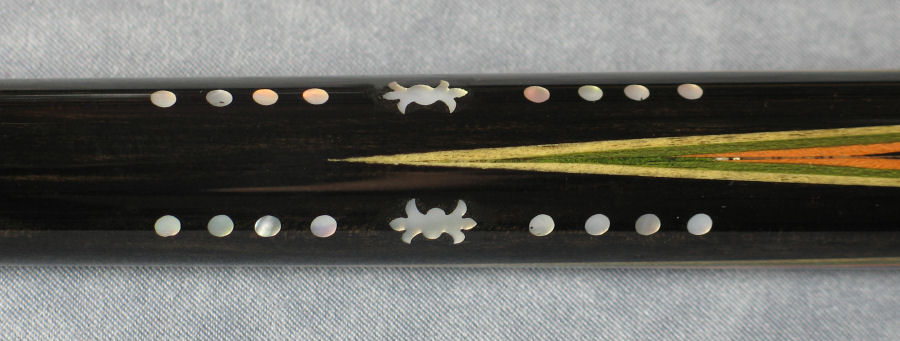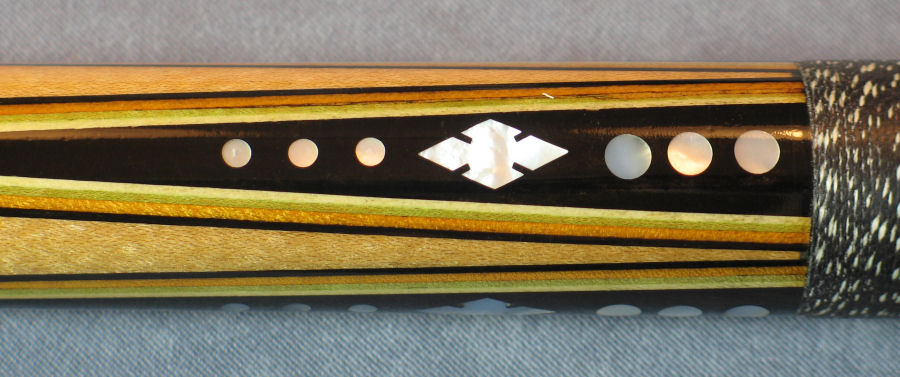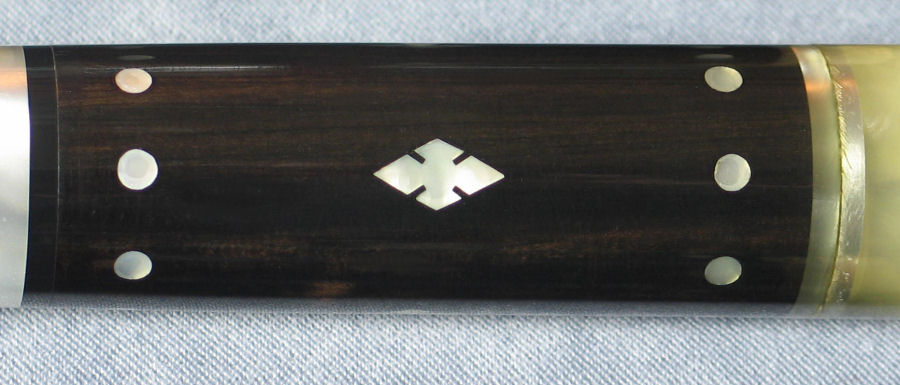
- The Palmer Collector -
In the Shop, Inlays
Inlays...
...were abundant on Palmers and were done by hand on the "Old Line" cues (First through Third Catalog).
Palmers were arguably the most prolific and skillfully executed hand inlaid cues ever made.
This page explains how the cues were decorated and shows close-up examples of their work.
Inlaying Cues by Hand
In the early years Palmer bought mother of pearl inlays from the H.L. Wild Company in New York, a supplier to guitar makers. These dot and diamond inlays have been used for centuries to mark the fretboards of guitars. They are shallow because they are also used to decorate the thin bodies of stringed instruments.
The inlaying process had to be extremely precise with these guitar inlays. If the pocket edges were not sharp and tight, glue lines would be obvious. If the pocket wasn't flat and at the correct depth, the edge of the inlay would be sanded though since the cue had a rounded surface. Eventually Palmer was able to order thicker inlays directly from Germany, making the job much easier.
Step by step:
1. The pattern of inlays was laid out with a pencil.
2. The centers of the inlays were punched with an awl to prevent drill bit drift.
3. The holes were drilled to size to accommodate round inlays.
4. The holes were drilled for the center of the diamond shape inlays.
5. A punch the size of the diamond shape inlay was tapped over the hole to mark the sides of the diamond on the wood.
6. The wood would be dug out by hand with a small chisel and hammer to allow the proper size cavity for the inlay.
7. Inlays were fitted and glued by hand, then filled with Plastic Wood stained to match the wood color to fill any tracks.
There were two people who did this operation. Gene Balner did the lay out and formed the cavities, while Ilona Balner usually handled the final placement of the inlays and filling. This was the part of the operation Mr. and Mrs. Balner seemed to have enjoyed the most and it certainly showed in their work.
Please examine some of the examples that follow and consider these images are magnified at
many times their actual size to reveal details not visible to the human eye.
Footnote from the Palmer Collector....
After reviewing the details of this work as explained to me, the inlaid cues in my collection have gained a new importance to me, especially those made prior to 1971.
I was touched at the thought of Mr. and Mrs. Balner working hand in hand to build these cues. The Balner's immigrated from Hungary as did my own grandparents from Italy. In Europe, craftsman have decorated their wares for centuries with hand inlays. There it is common to see women handling such delicate tasks as well. I was also touched that Ilona enjoyed doing the inlay work.
The art of the hand inlay is now a thing of the past with the advent of tools that can accurately cut both the pocket and the inlay into an infinite number of shapes. From these examples, I think you will agree that there is an exact science to precision inlay work. I would like to point out that I randomly chose cues to take these photos. I am also confident that that all of the inlays on all of my Palmer's would equally hold up to the scrutiny of my camera on macro setting.
In addition to technique, skill and experience are required to achieve this level of hand inlay precision. The Balner's developed these skills by doing many, many thousands of inlays.
Thank you for visiting this page!
Chris



